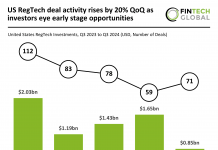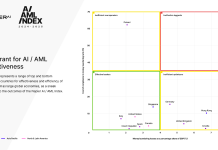The WealthTech landscape is undergoing constant transformation. A significant driver of this change is the influx of younger customers due to the great wealth transfer. Kidbrooke recently explored the power of dynamic IT architecture within wealth management.
A recent study by Oliver Wyman highlights the wealth transfer shift, showing that 70% of these customers prefer digital wealth channels to manage their wealth. This preference, combined with the success of early adopters, shows that digital wealth services can greatly increase the accessibility of wealth management services.
Post-pandemic transformation and the impending revolution spurred by artificial intelligence have underscored the need for business models that are robust and efficient digital wealth tools. Despite this, outdated IT architecture remains a challenge, preventing many businesses from fully preparing for the future. This pace of digital wealth transformation necessitates a flexible IT architecture that can keep up with both expected and unexpected changes.
An efficient IT architecture requires careful consideration and balance. It should be flexible and modular while also being easy to implement. Flexibility allows your business to adapt to continual changes. As your business grows, you may want to extend your digital wealth services or update them based on client feedback. Modular API-first solutions have proved effective in this regard.
Modularity is another key consideration. Depending on your existing technology stack, you may need a comprehensive solution or just a component to complete your digital wealth customer journey. A proper evaluation of your digital wealth requirements can therefore make your project more affordable and improve the quality of your IT architecture.
Choosing technology that supports your business goals and has the right balance of modularity and flexibility is essential. While modular systems allow for incremental changes and upgrades, they can be more challenging and costly to maintain. On the other hand, a monolithic approach may be faster and more cost-effective but can become outdated and inflexible.
When planning your digital wealth journey, begin by identifying your business domains. One domain could relate to your customers, another to the financial products you offer, and a third could relate to the holdings or products your customers have purchased.
Once you’ve defined your domains, categorise your applications accordingly. The next step is to design your architecture with your desired outcomes in mind. For instance, if you need to consolidate multiple applications within a domain, consider creating an aggregating domain service.
An adaptable IT architecture is critical in today’s rapidly changing WealthTech landscape. It’s essential to find a balance between flexibility, modularity, ease of implementation, and cost efficiency. No single solution fits every business, but these principles can help you design a flexible system that allows you to innovate continuously with minimal hassle. By prioritising an adaptable architecture, wealth management firms can meet customer expectations and drive growth more efficiently.
Read the full report here.
Keep up with all the latest FinTech news here
Copyright © 2023 FinTech Global











